A five photo flight series.
This is an older series taken on Antelope Island in July of 2012. Two of the five photos have been posted before (readers may remember one of them from the rotating banner I used to have at the top of my blog) but three of them are new to Feathered Photography and none of the five have ever been seen in a series. I’ll explain why at the end of this post.
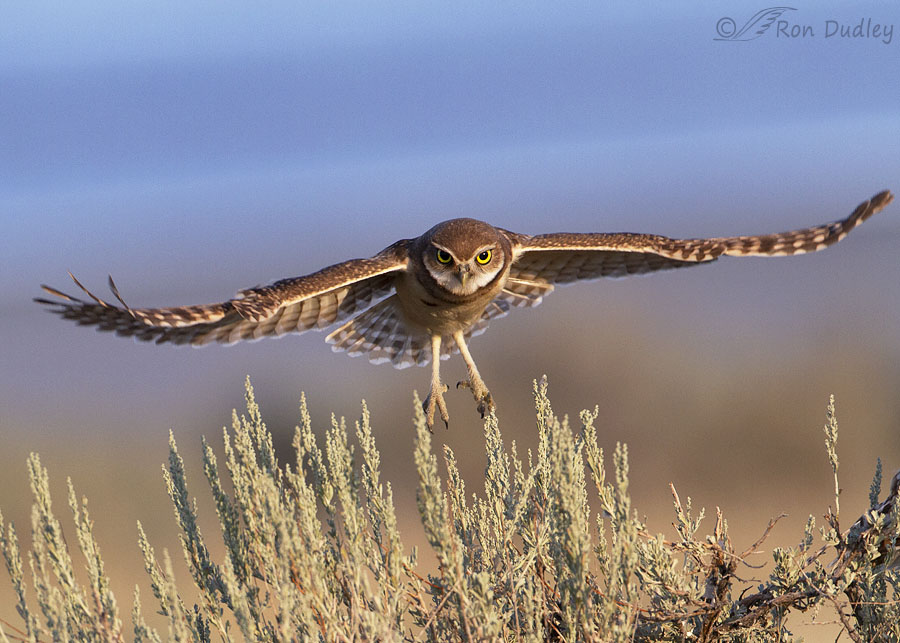
1/2000, f/6.3, ISO 640, Canon 7D, Canon EF 500mm f/4L IS USM, not baited, set up or called in
On that morning this young Burrowing Owl and ‘his’ siblings were practicing their takeoffs and landings which they weren’t yet very good at. Most often they were approaching their intended landing spots from my right or my left so I was lucky to get a single flight or landing shot, especially back then when my tracking skills weren’t much better than their landing skills.
But this young bird made a head-on approach to his intended landing spot in a sagebrush which made it a little easier for me to lock on to him and keep locked on. I’m particularly fond of the series because I like the colors of the Great Salt Lake shoreline in the background.
In the first two shots he’s looking at me instead of…
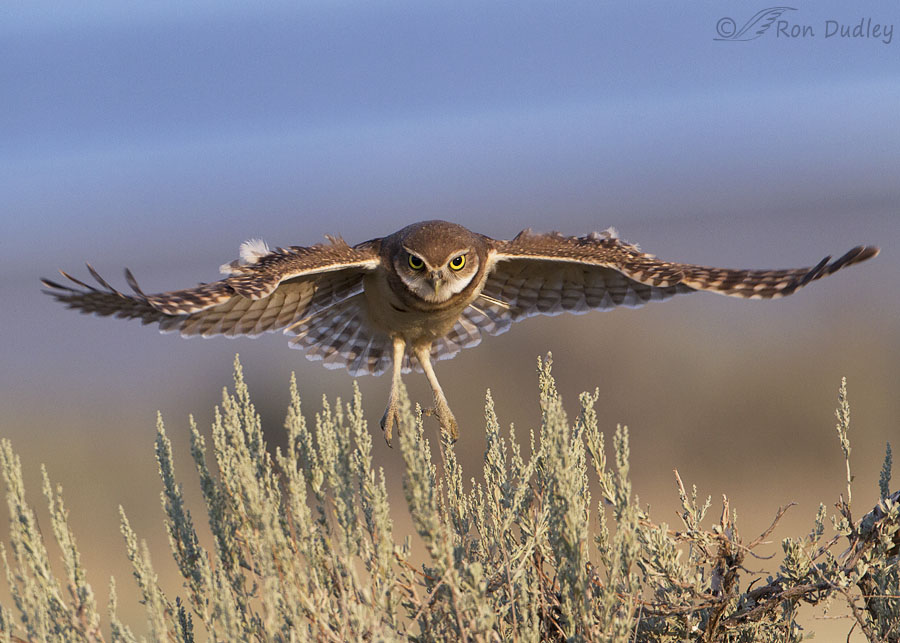
1/2000, f/6.3, ISO 640, Canon 7D, Canon EF 500mm f/4L IS USM, not baited, set up or called in
his intended landing spot, probably because I’m a suspicious looking character. But at some point he had to look at the sagebrush in order to plan his precise landing spot and that happened…
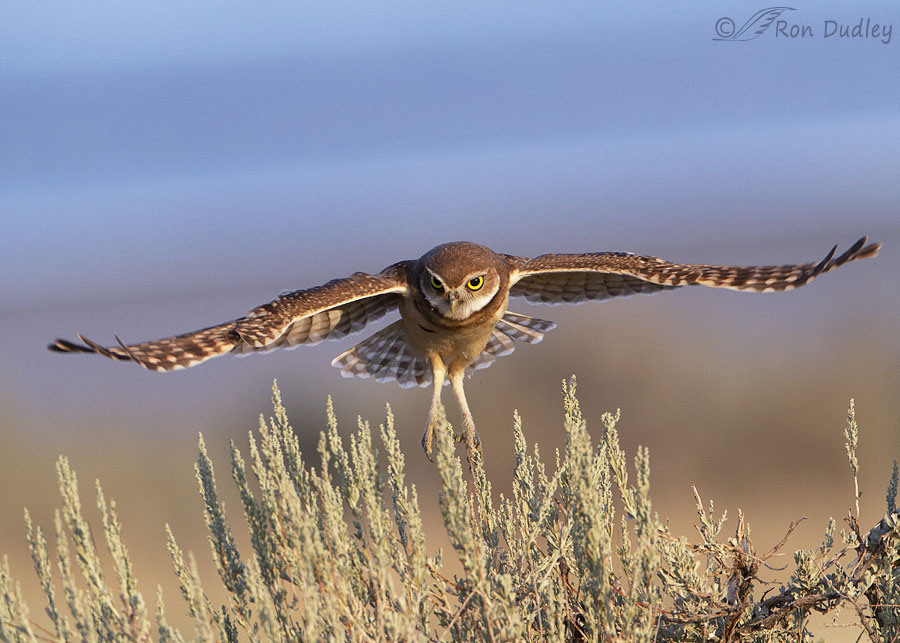
1/2000, f/6.3, ISO 640, Canon 7D, Canon EF 500mm f/4L IS USM, not baited, set up or called in
in the next shot in the series.
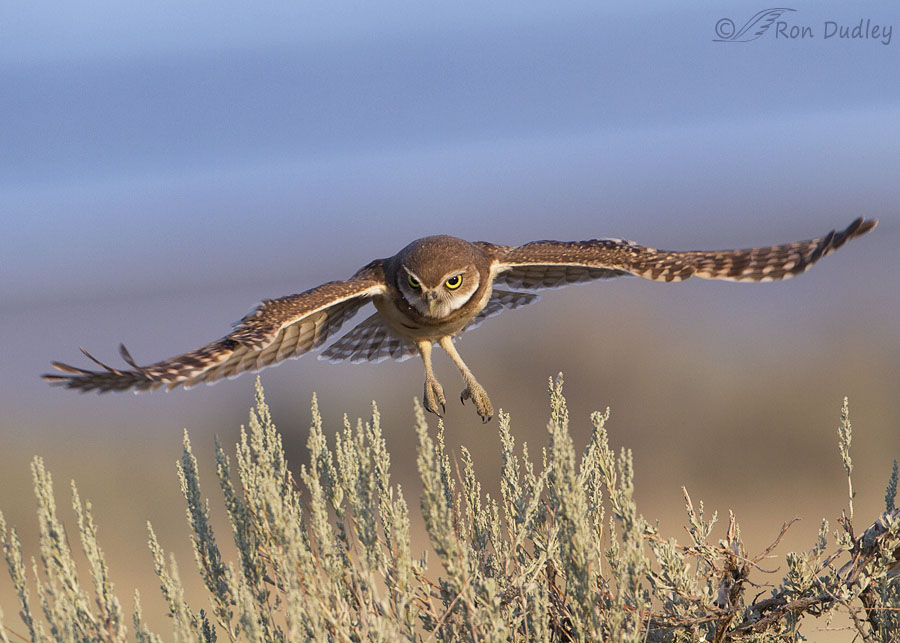
1/1600, f/6.3, ISO 640, Canon 7D, Canon EF 500mm f/4L IS USM, not baited, set up or called in
Now he’s really concentrating on the sagebrush. At this age clumsy landings are the rule rather than the exception and he was obviously trying to improve his track record through practice.
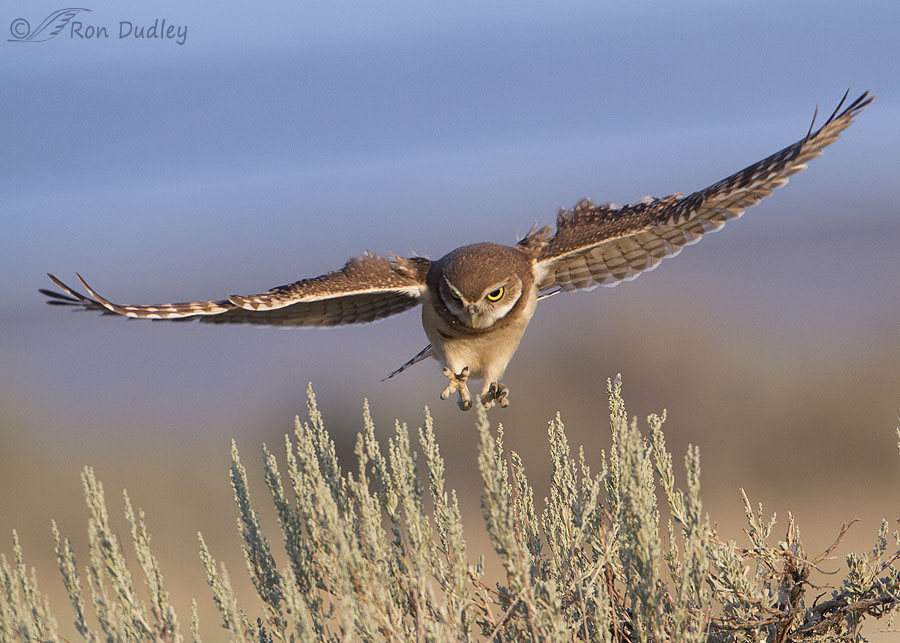
1/1600, f/6.3, ISO 640, Canon 7D, Canon EF 500mm f/4L IS USM, not baited, set up or called in
Now his feet are reaching out to grab the sagebrush. But we’ll all be left in the lurch wondering how the landing went because this is the last photo I saved and nine years later I can’t remember if he aced the landing or not.
OK, time to fess up about why I’ve never posted all five photos as a series. To my sensibilities these photos need clockwise rotation, suggested by the sagebrush stems leaning to our left and the color bands in the water in the background that aren’t horizontal. But in three of the photos I didn’t have enough room on the right for rotation because if I rotated them I’d cut off the tip of his left wing. The two photos where I did have enough room are #2 and #5 so they’re the two photos I posted years ago.
But for today’s post I decided to look past that flaw and post all five photos without rotation. I enjoy seeing them as a series, warts and all, and I thought my readers might too.
Ron


Super photos, Ron. Just Wow! Thank you for all your hard work photographing, sorting, cropping and critiquing your photos. The images you capture never cease to amaze me.
You’ve pointed out any number of “flaws” in your shots I never noticed until you mention them. However with this–another excellent series–I noticed the tilt instantly. The reason? Virtually all of my images are tilted by just about the same amount despite my best efforts to correct that in the field. But–as far as I am concerned–it does not detract from the high quality of these images.
Jim, once we’re ‘trained’ to notice the tilt, if it exists, it’s hard to ignore isn’t it.
I kept thinking he wasn’t sure what to do with his legs and feet. But the last photograph looks like he has firm control over his landing gear. However, his choice of a twiggy landing platform might be a crash and burn situation. On the other hand, he might be cruising over the sagebrush toward a better landing.
And perhaps this is a female, in which case we could call her Amelia, because we will most likely never know her ultimate fate.
Nope, he landed on the sagebrush Lyle. That much I do remember.
I got a kick out of your last sentence.
Gosh! I’m speechless!
Ron, the intensity in his eyes more than makes up for the rotational issue, in fact, I didn’t even notice it until you pointed it out. Super series in my mind.
Good. Thanks, David.
Sensational series Ron, thanks for sharing!
Charlotte Norton
Thanks, Charlotte.
Thank you.
It is just after 3.30 here and this is a WONDERFUL start to my day. Rotation shmotation. This young trier is the star and I hope that he did nail the landing – and many, many more after it. Porcupine is right our brains can manage this small alteration perfectly happily (or not see the need).
Thanks, EC. Somehow I think I’ll draw a blank if I try to look up “shmotation”…
Probably – but you knew exactly what I meant.
Yup, I sure did.
What’s not to love about a juvenile Burrowing Owl (or five of them!) learning how to be a capable adult? And like everyone else here, the rotation is not an issue for me because the beauty and interest inherent in the composition of each of these images far outweighs it. I’m scoring a 10 for you and little owl!
Chris, I’ll speak for the owl and say we’ll both take our 10’s!
These photos need no negative critiquing. They are fine. I always enjoy your work and never see the the issues you do until you point them out. Enjoy your day.
Thanks, Betty.
What a fun series, although you left us with a cliff hanger (sage hanger?). You and that itchy trigger finger.
There is so much wonderful in these shots that I didn’t even notice any rotation issue. I’m so glad you shared these. And why do Burrowing Owls always look a little irked?
Feel cheated a bit too! Twas expecting to see a crash landing in the sage! It’s human nature to want to see a crash I guess. . . .
Terri, I saw several landings that morning that were pretty darn close to crash landings.
I’ll admit it, Marty. I wish I could cull the original series again to see if I’d still delete all of the photos I trashed.
Definitely an impressive series and one to be proud of!
Thanks, Bruce.
Warts and all, we’ll take them as is. Great series. Love the eyes – in every shot I am first drawn to the eyes. My gut feeling is that he nailed the landing. My favorite of the series is # 2.
#2 is my favorite too, Everett. I’m just grateful that was one of the two photos that had enough room for rotation without cutting off a wing tip.
Killer series! These are really nice and who cares if the sage is tilted! I would have never known if you didn’t mention it. Maybe they grew that way with the wind.
OK, that decides it, Keith – the sage was wind-tilted…
Beautiful series, Ron – rotation or not they are great! Always a learning curve for the young of any species.
Always a learning curve for the young of any species.  Love the concentration……
Love the concentration……
43 this morning after the low 60’s yesterday and snow in the Butte area. Say it will be 94 my Mon. and 98 by Tues. Horrible stress of everything including us.
Horrible stress of everything including us. 
Thanks, Judy. It was pretty cool here this morning too. I actually turned the furnace on for a few minutes.
I’m going to assume he nailed the landing, since no one can reasonably argue with that assumption!
The optical cortex of our brain is good at, and used to adjusting for the tilting and rotating of our heads, which changes our perspective in the course of moving through an uneven world. Most of us make the same unconscious adjustment when looking at photos. Only art critics would even bring it up! Just like when there are sticks in the view, I think the tilting makes the photos seem more real. I would not have noticed it if you had not pointed it out.
Thanks, Porcupine. I’m probably more sensitive to photos with rotation issues than I need to be because of all the years I spent being active in a bird photography critique group (NPN).